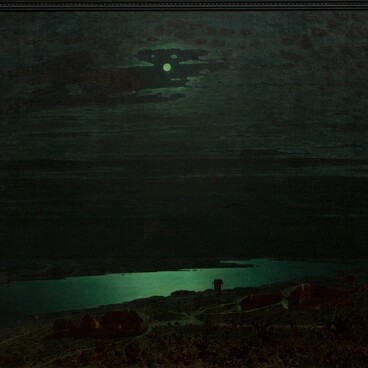August von Brandis is a German impressionist painter and one of the outstanding masters of depicting interiors in paintings. He devoted a considerable part of his life to traveling in search of monumental historical halls, which he could capture in his paintings.
The artist was born on May 12, 1859 in the Baltics. However, his parents wanted the boy to be educated in Germany, so August moved first to relatives in Hanover, and spent his last school years in his brother’s family in Berlin.
After graduating from high school, August von Brandis entered the Royal Prussian Academy of Arts in the German capital. As a student, he passed an exam for the position of a drawing teacher and got a job in one of Berlin gymnasiums. At the same time he began to paint portraits on private orders. During that period the artist worked in the academic manner. In 1890 he won an academy competition with a painting on a religious theme, and then he took part in several exhibitions with paintings dedicated to biblical subjects.
While working in school, August von Brandis developed his own methods of teaching drawing techniques, which did not go unnoticed. The Prussian Ministry of Education invited him to lead the training of drawing teachers and appointed him to supervise several exhibitions.
Being in that post, the painter visited the settlement of artists, which had formed in the city of Dachau in 1897. During the visit he became fascinated with the works of Parisian impressionists, which had a strong influence on his work. Three years later August von Brandis joined the Noe-Dachau association and became close to the leading masters of Germany who worked in that area of art.
The main theme of his paintings was interiors, the artist painted portraits only in exceptional cases. The painter masterfully worked with light and created impressive spatial images of museum halls that he found in Italy, France and the Netherlands.
The work is typical of the artist’s early period of fascination with impressionism. Here the interior is not given so much attention, as in his later works. The person and her life are not the central objects, the real center of the picture coincides with the reflection of light falling from the window onto the mirror and reflected to the opposite wall.
It is possible to draw a parallel between this painting and works of Dutch painters of the 16th-17th centuries, where the play of light in the ordinary interior was the main content of the works.
The influence of impressionism is manifested in the fleetingness of the plot, devoid of narrative, in the manner of painting, conveying an immediate impression of reality, in which the main role is played by the light-air environment.
The artist was born on May 12, 1859 in the Baltics. However, his parents wanted the boy to be educated in Germany, so August moved first to relatives in Hanover, and spent his last school years in his brother’s family in Berlin.
After graduating from high school, August von Brandis entered the Royal Prussian Academy of Arts in the German capital. As a student, he passed an exam for the position of a drawing teacher and got a job in one of Berlin gymnasiums. At the same time he began to paint portraits on private orders. During that period the artist worked in the academic manner. In 1890 he won an academy competition with a painting on a religious theme, and then he took part in several exhibitions with paintings dedicated to biblical subjects.
While working in school, August von Brandis developed his own methods of teaching drawing techniques, which did not go unnoticed. The Prussian Ministry of Education invited him to lead the training of drawing teachers and appointed him to supervise several exhibitions.
Being in that post, the painter visited the settlement of artists, which had formed in the city of Dachau in 1897. During the visit he became fascinated with the works of Parisian impressionists, which had a strong influence on his work. Three years later August von Brandis joined the Noe-Dachau association and became close to the leading masters of Germany who worked in that area of art.
The main theme of his paintings was interiors, the artist painted portraits only in exceptional cases. The painter masterfully worked with light and created impressive spatial images of museum halls that he found in Italy, France and the Netherlands.
The work is typical of the artist’s early period of fascination with impressionism. Here the interior is not given so much attention, as in his later works. The person and her life are not the central objects, the real center of the picture coincides with the reflection of light falling from the window onto the mirror and reflected to the opposite wall.
It is possible to draw a parallel between this painting and works of Dutch painters of the 16th-17th centuries, where the play of light in the ordinary interior was the main content of the works.
The influence of impressionism is manifested in the fleetingness of the plot, devoid of narrative, in the manner of painting, conveying an immediate impression of reality, in which the main role is played by the light-air environment.

